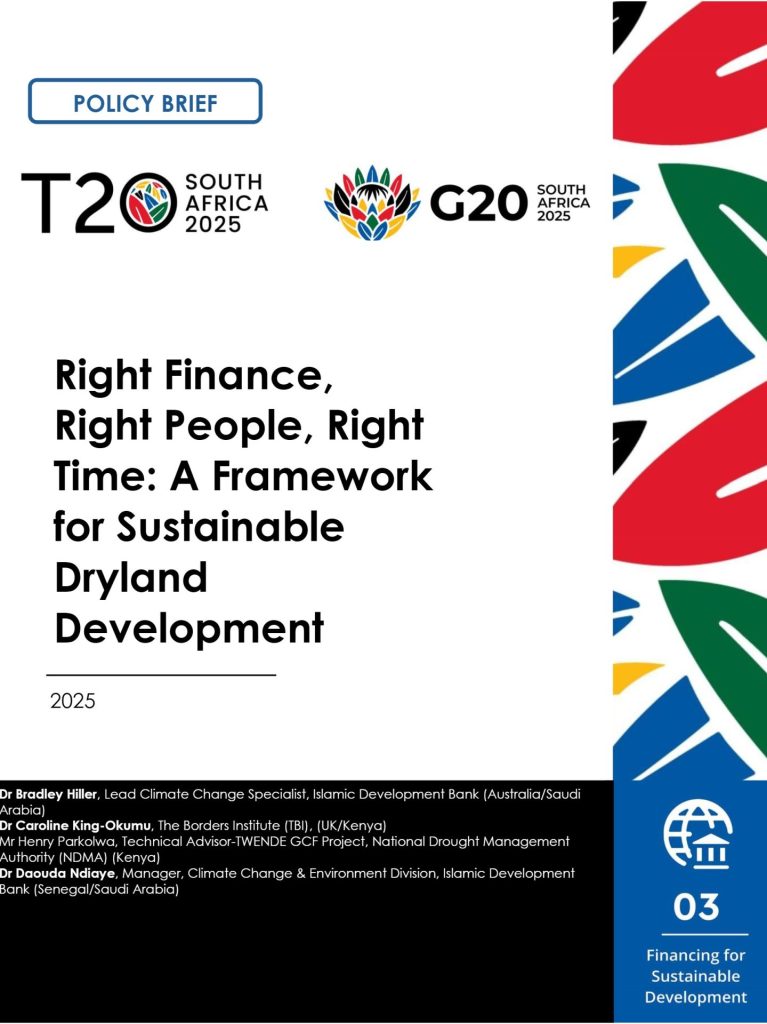Traditional development finance models are insufficient for addressing today’s complex, interconnected global development challenges. Emerging finance modalities and actors – both public and private – are creating new opportunities to address increasingly frequent and severe climate and non-climate shock events, demanding a more dynamic and adaptive global development finance architecture. Such reform is especially crucial in drylands – regions with the world’s highest concentrations of poverty; severe deficits in the achievement of the Sustainable Development Goals (SDGs) and human development indicators; and an annual financing gap of $278 billion to 2030.
This policy brief presents an innovative finance framework for drylands, counting down to the achievement of sustainable development and recovery from shock events across three interconnected phases: Phase 1: Sustainable Productivity and Resilient Development; Phase 2: Bracing for Shock; and Phase 3: Transitioning Back Better (where required). The framework integrates intermittent shock events into long-term development and resiliency strategies, centering climate and non-climate disruptions as key planning considerations. While shock events are inevitable, resilience can be proactively built: preventing impacts where possible, managing disruptions effectively, and ensuring recovery transitions back to sustainable development pathways.
The framework supports the identification of both traditional and innovative forms of public, private and alternative finance for scaling up support for resilient, sustainable dryland development. In doing so, the framework aims to get the “right finance to the right people at the right time”.
The framework aims to support initiatives such as the G20 Global Land Initiative and Land Degradation Neutrality targets, including the leveraging of successful local and national initiatives, including country examples (such as Kenya’s National Drought Management Authority), to inform regional interventions such as Africa’s Great Green Wall, Middle East Green Initiative, and others.
The policy brief builds upon a T20 Brasil policy brief on sustainable financing for drylands; outputs from the December 2024 16th UNCCD Conference of Parties; and recent G20 calls to accelerate progress on the SDGs and socially just, environmentally sustainable, and economically sound measures to overcome inequality. The finance framework aims to develop resilient, inclusive dryland development models, reflecting the South African Presidency’s themes of solidarity, equality, and sustainability, and its stated priority for disaster risk reduction.

